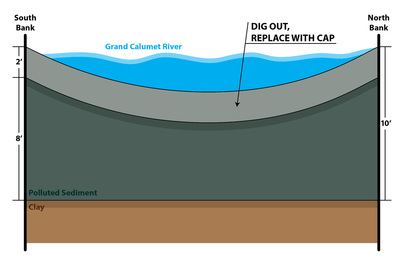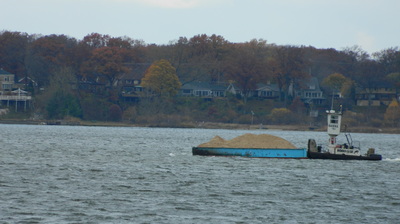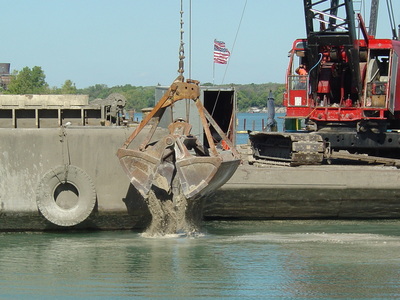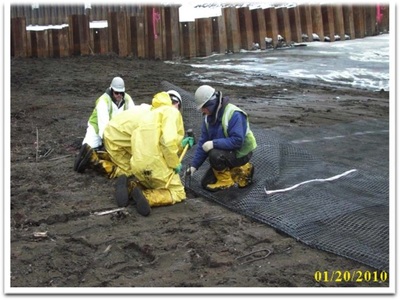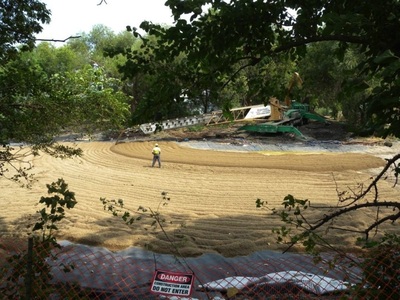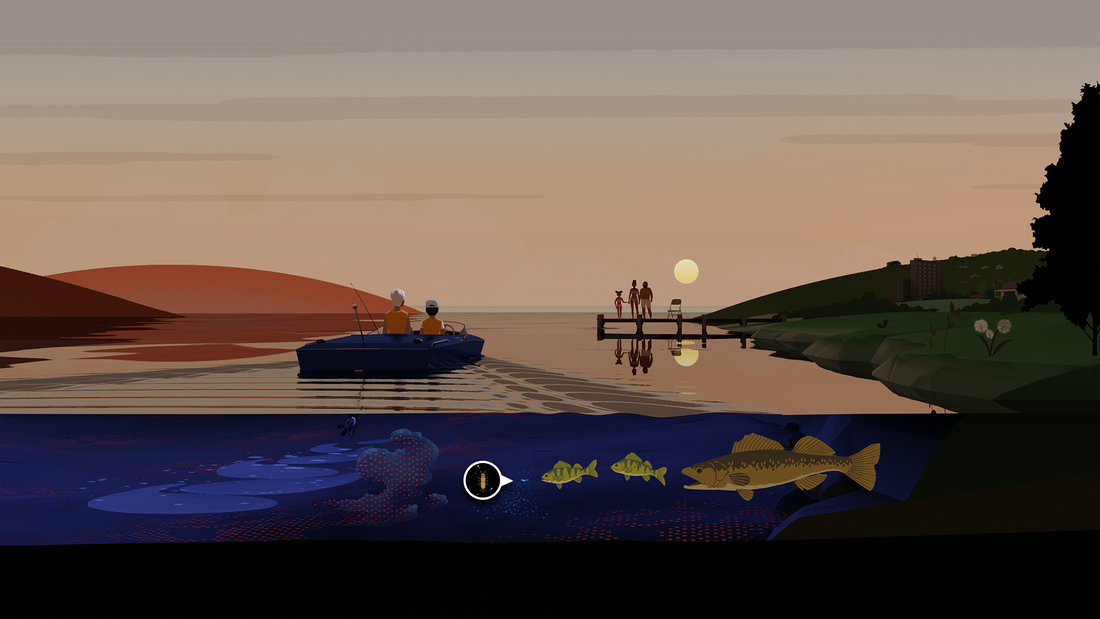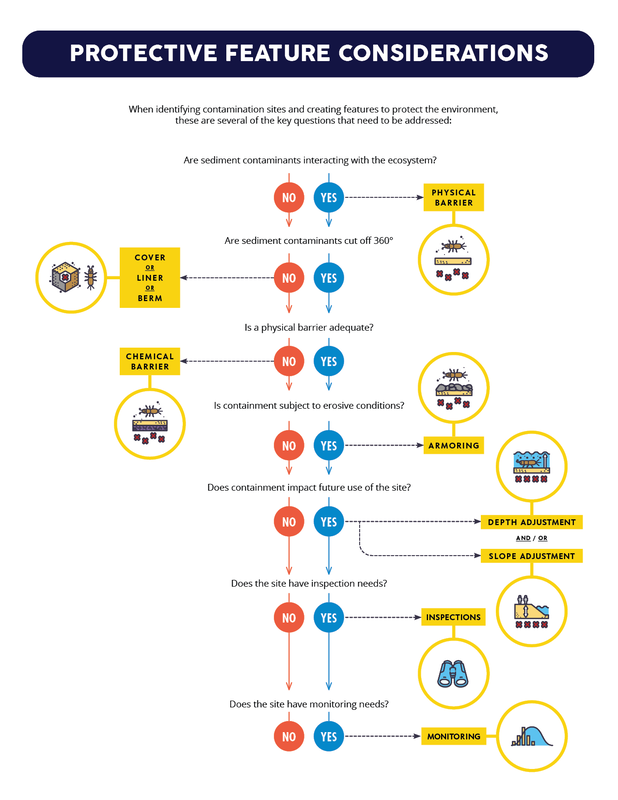Caps and covers use clean material like sand, gravel, or rocks to cover contaminated sediment and keep it in place in a river or lake bottom. Sediment removal can never remove 100 percent of the contamination, and many projects will place a six to 12 inch sand cover over the recently dredged area to cover any residual contamination. A sand cover may also be placed to create a physical barrier between low levels of contamination and the aquatic environment. A cap usually indicates something more complex, which could include multiple filtering layers composed of liners, geotextile matting, organic carbon, or other materials. Caps and covers can also provide a new, clean habitat for bottom-dwelling organisms.
Covers and caps create a physical barrier between water and the contaminated sediment, preventing the sediment from eroding and moving to other areas. Capping also creates a chemical filtering barrier between water and the contaminated sediment, where substances within the cap react with the contamination and keep it in place. However, a cap must be maintained, creating long-term costs for a non-federal partner. To protect a cap's integrity, changes to the river bottom (dock installation, for example) may be prohibited, limiting options for future use.
Containment Effectiveness
A variety of wildlife, fishes, and invertebrates cannot thrive, reproduce successfully, or even survive if they interact with contaminated sediment in their habitat. Sediment-dwelling organisms bear the brunt of this impact. Some contaminants can move up the food chain and leave fish and wildlife unsafe to eat. They make the water unsuitable for swimming and prevent communities from performing routine dredging.
Modern science does not give us the ability to make the contamination go away. We are working in large natural systems with multiple contaminants. Rather than dwell on a problem that modern science will not allow us to fix - that contaminants exist - we focus on the problem that we can solve: contaminants are interacting with aquatic life, and contaminants are restricting human activities. Our remedy must cut off the connection between sediment contamination and the ecosystem.
|
We want our remedy to work with the natural environment, not against it. Contaminants for the most part are really attracted to sediment. This is a strong bond at the chemical level. We choose a remedy that protects the natural sediment-contaminant bond. Whether we remove the sediment and place it in containment, or we leave it in place and cap it, the remedy must isolate the contaminated sediment from the rest of the environment in the long-term.
|
|
In designing effective containment, there are a lot of considerations for protecting the sediment-contaminant bond. In the case of sediment remediation sites, sediment contaminants are interacting with the ecosystem. This interaction is the problem to address. How do we do so effectively? The image here outlines protective features that may be added based on site needs.
At the basic level, containment needs to create a physical barrier between the contaminated sediment and the ecosystem. And this containment needs to create a 360 surrounding. This may require the addition of a cover, liner, and/or berm. Sometimes there are space restrictions (like putting a cap under a navigation channel) or the toxin concentrations are very high, making a physical barrier inadequate. In such cases, a chemical barrier can be added. If the containment is subject to erosive conditions like from extreme weather, wave action, or propeller wash, then armoring can be added. In some cases the community may have future plans for the site that require adjustments. For example, water depth may need to accommodate large boats or the containment site's slope may need to be flat in some areas for recreational activities. Containment may be subject to short- and long-term inspections or monitoring. This is often based on local, state, and federal law. |
